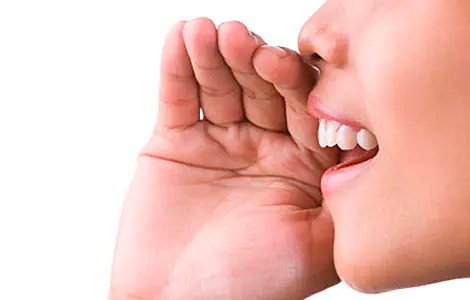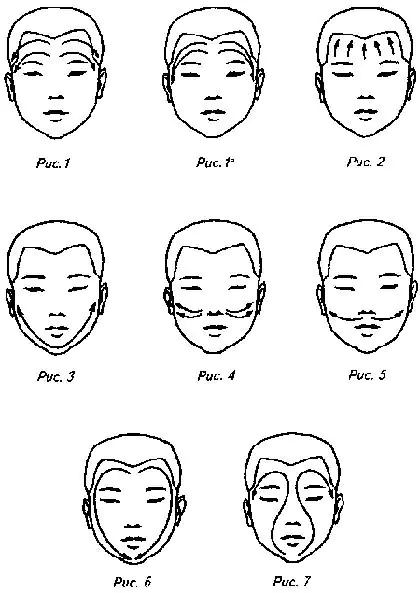Speech impairment or stuttering is quite common. There is a massage for stuttering that will eliminate the increased excitability of the speech centers. It will also restore speech regulation. Most often, segmental and acupressure massage is used for stuttering. Some experts use them in combination.
The massage technique for stuttering, which will be outlined below, is used for children and adults. Unlike adults, children's massage uses the least amount of pressure.

Rules
Basic rules for this massage:
- the pace is slow and leisurely;
- the patient should feel calm, comfortable and warm;
- It is better to perform a massage accompanied by calm music;
- The massage therapist's hands should be warm.
Sequence of massage:
- neck area;
- upper shoulder girdle area;
- facial muscles;
- lip muscles;
- larynx area.
Massage technique
What we want to achieve from a massage is muscle relaxation. A person who stutters often has pronounced muscle tone in the neck and upper shoulder girdle. Having achieved relaxation of these zones, the tone of the tongue root decreases and, accordingly, the tone of the muscles of the lower jaw decreases.

Massage scheme
Relaxing the neck muscles
- The massage begins with stroking. This massage technique is performed with the palms of both hands in the top-down direction 5-7 times.
- Alternately stroking the throat area, bypassing the thyroid gland. Repeat 5-7 times.
- Stroking the side of the neck. The palms should move from the parotid area to the armpits. Repeat 5-7 times.
- We also stroke the side of the neck, but move from the back of the head to the armpits.
- Exercise “Fell asleep.” It is carried out as follows: the head falls forward. Repeat 3-4 times.
- Turns the head left and right, with the head thrown back slightly. Repeat 3-4 times.
- Exercise “Dropped”. To do this, the head is lowered. Repeat 3-4 times.
Relaxation of facial muscles
- Stroking the forehead area. The movement is directed from the center of the forehead to the temples.
- Stroking from the center of the forehead to the ears.
- Stroking from eyebrows to hairline. Where the movement ends, apply slight pressure. The reception is carried out with both hands.
- Movement from the chin to the temporal cavities. Performed with both hands at the same time. Light pressure is applied in the area of the ear tragus.
- Stroking from the back of the nose to the auricle.
- Next stroke: from the center of the upper lip to the auricle.
- Smooth stroking from the center of the forehead to the chin. Hands should frame the face, passing through the temporal area along the cheeks.
- Movement from the center of the chin to the middle of the forehead, moving along the nasolabial fold and bridge of the nose. From the center of the forehead, movements continue to the temporal cavities.
Movements must be accompanied by vibration. Techniques are carried out with the index, middle and ring fingers.
Relaxation of the orbicularis oculi muscle
The eye massage is carried out extremely gently, without any stretching.
- Stroking from the temple to the inner corner of the eye, passing along the lower eyelid, then along the superciliary arch to the temporal zone. The movement is completed by lightly pressing the temples. The technique is performed using the pads of the 2nd and 3rd fingers of both hands simultaneously.
- Stroking the circular muscles of the eye, moving from the temple to the inner corner of the eye, passing along the lower eyelid and gently moving to the upper eyelid. the movement is carried out with the pad of the 4th finger of both hands simultaneously. Do not press on the eyeball.
Relaxation of lip muscles
During the massage, the lips can be closed or slightly open.
- We begin the massage with light stroking from the corners of the mouth to the center of the upper lip.
- Stroking from the corners of the mouth to the center of the lower lip.
- Stroking from the center of the upper lip to the center of the chin.
- Exercise “Smile”. To do this, use your index and middle fingers to slightly stretch your lips, placing your fingers in the corners of your mouth. Having stretched, we perform the opposite action.
- Stroking the nasolabial fold, moving from the wings of the nose to the corners of the mouth.
- Gently tap the labial muscles with the 2nd and 3rd fingers clockwise.
Larynx massage
With your thumb, index and middle fingers, you need to lightly grab the larynx and perform transverse rhythmic movements. To complicate the exercise, you can ask the patient to pronounce vowels.
Massage is effective if it is carried out in a course of 12 procedures. If necessary, you can repeat the course at intervals of 2 weeks. Massage should not be performed immediately after meals or on an empty stomach.



